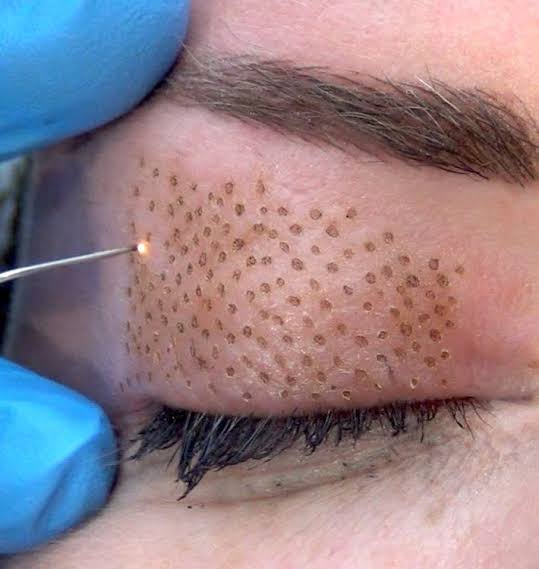Plasma pen treatments have gained popularity for their ability to address skin issues such as wrinkles, sagging, and skin texture irregularities. As effective as this treatment can be, proper aftercare is crucial to achieving the best results and ensuring smooth healing. This article shares expert-recommended tips on how to care for your skin post-plasma pen treatment.
What is Plasma Pen Treatment?
Plasma pen Treatment is a non-invasive procedure that uses plasma energy to stimulate collagen production, tighten the skin, and improve its texture. It is commonly used for facial rejuvenation, targeting areas like around the eyes, mouth, and jawline. The plasma pen creates controlled micro-injuries to the skin, which triggers the body’s healing process and leads to smoother, firmer skin over time.
While plasma pen treatment can yield impressive results, the healing process requires patience and care. Following aftercare guidelines will help reduce any discomfort and speed up recovery.

Immediate Post-Treatment Care
The first 24 to 48 hours after a plasma pen treatment are critical for recovery. During this period, your skin will be healing, and you need to take extra care to protect it from irritation and infection.
Keep the Treated Area Clean
Cleaning the treated area is one of the most important steps in your aftercare routine. Gently cleanse your skin with a mild, non-irritating cleanser to remove any impurities or residue. Avoid harsh soaps or exfoliators, as these can irritate the skin and delay the healing process.
Experts recommend using lukewarm water and a gentle, alcohol-free cleanser to avoid drying out the skin. Do not scrub the treated area—let it heal naturally.
Apply Recommended Ointment
After plasma pen treatment, your dermatologist or practitioner will likely recommend a soothing ointment to apply to the treated areas. This ointment helps protect the skin from infection, promotes healing, and prevents scabbing. Make sure to apply the ointment as instructed, typically a thin layer, to keep the skin hydrated.
Avoid Sun Exposure
Sun exposure can slow down the healing process and increase the risk of hyperpigmentation. It is crucial to keep the treated areas out of direct sunlight for at least two weeks after the treatment. If you need to go outside, wear a wide-brimmed hat or use a high-quality sunscreen with SPF 50+ to protect your skin.
Experts also advise against using tanning beds during the healing process to avoid further damage to the skin.
Healing Process: What to Expect
Following plasma pen treatment, your skin will go through several stages of healing. The intensity and duration of the recovery process depend on the area treated, the depth of the plasma energy, and your skin’s individual healing response.
Redness and Swelling
Immediately after the treatment, you can expect some redness and swelling in the treated areas. This is a normal reaction as your skin begins to repair itself. Swelling may last for a few hours to a few days, depending on the extent of the treatment. You can reduce swelling by applying a cool compress for short periods.
Avoid applying ice directly to the skin, as it can cause tissue damage. If the swelling becomes excessive or uncomfortable, consult your practitioner for advice.
Scabbing and Peeling
Small scabs or crusts will form as part of the healing process. Do not pick or scratch these scabs, as this can lead to scarring or hyperpigmentation. It is important to let the scabs fall off naturally. Peeling is a sign that new skin is forming underneath, so avoid disturbing it.
Dryness and Tightness
It is common to experience dry or tight skin as the treated areas heal. Applying a gentle, hydrating moisturizer can help alleviate these sensations and keep the skin hydrated. Avoid using heavy creams or products that contain alcohol, as these can irritate the skin and slow down healing.
Long-Term Aftercare Tips
Once the initial healing period is over, it is important to continue taking good care of your skin to maintain the results and prevent any complications.
Stay Hydrated
Drinking plenty of water is essential for maintaining skin hydration. Hydrated skin heals faster and better, so keep your water intake high, especially during the first few weeks after your treatment.
Use Sun Protection Daily
Even after the initial healing period, daily sun protection is vital to protect your skin from harmful UV rays. Sun exposure can cause hyperpigmentation, especially on newly treated skin. Apply a broad-spectrum sunscreen every morning and reapply it throughout the day if needed.
Follow-up Treatments
Depending on your individual skin concerns and the area treated, follow-up plasma pen sessions may be recommended to maintain or enhance results. These treatments should be spaced according to your practitioner’s advice to avoid over-treating the skin.
Avoid Harsh Skincare Products
After plasma pen treatment, your skin will be more sensitive, and harsh skincare products could cause irritation. Stick to gentle, hydrating products that are free from strong fragrances or chemicals. Your dermatologist may recommend specific products designed for sensitive skin during this time.
When to Contact Your Practitioner
In most cases, the aftercare tips mentioned above will help your skin heal smoothly. However, if you experience any of the following, it’s important to reach out to your practitioner immediately:
Persistent or severe swelling that does not subside
Excessive scabbing or crusting
Signs of infection (redness, warmth, discharge)
No improvement after several weeks of healing
Your practitioner will be able to guide you on the next steps and determine if further intervention is necessary.
Final Thoughts
Plasma pen treatment in Dubai can offer remarkable results for skin rejuvenation, but proper aftercare is essential for achieving the best possible outcome. By following these expert-recommended tips, you can ensure a smoother healing process and enjoy long-lasting results. Remember that patience is key—allow your skin the time it needs to fully recover, and always follow the advice of your practitioner for optimal care.
